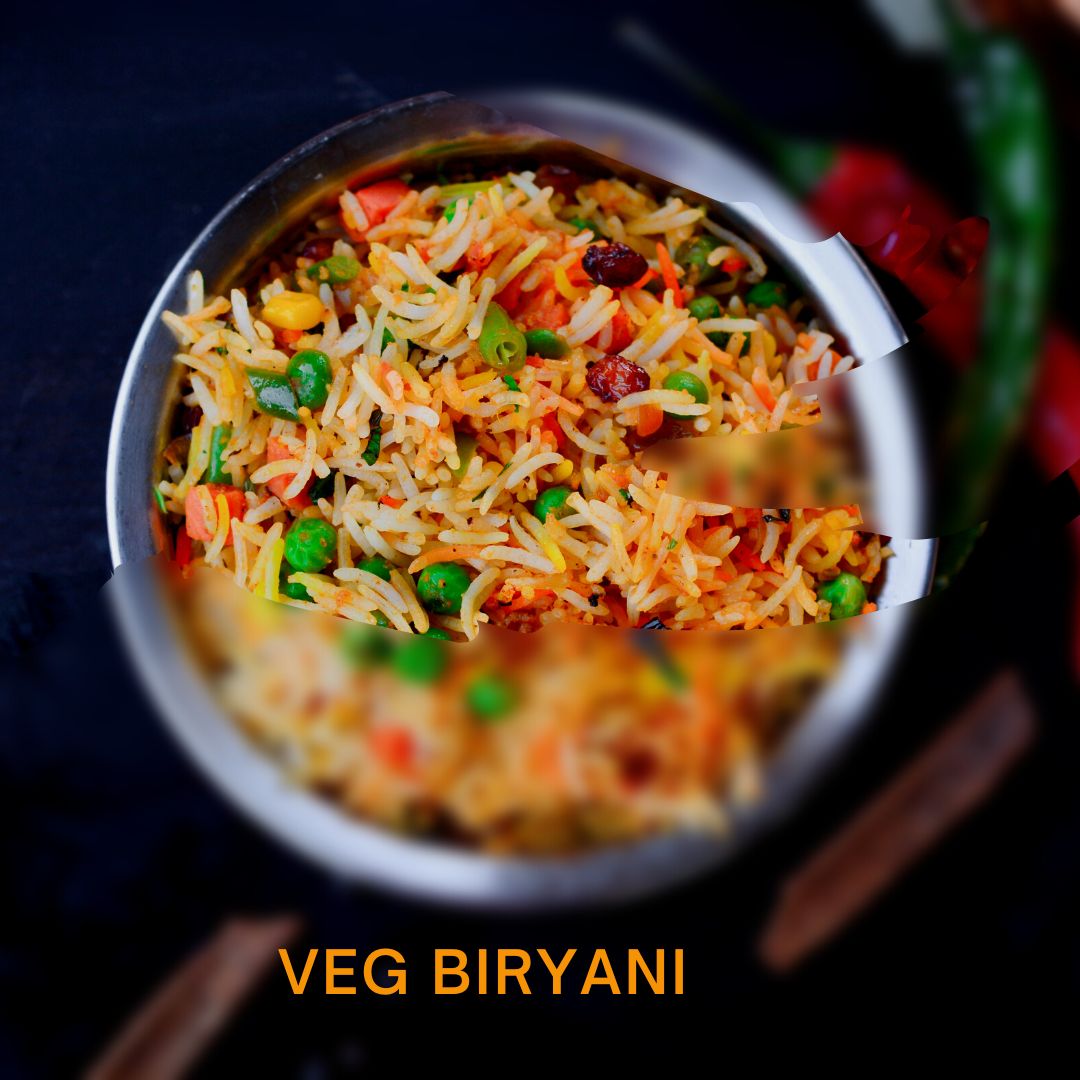Indian cuisine is a tapestry of flavours and aromas, with each region contributing its unique essence. Among the many culinary delights, Veg Biryani stands out as a fragrant and flavourful dish woven into the fabric of Indian gastronomy. This article delves into this iconic vegetarian dish’s (Indian Veg Biryani Recipe) origins, ingredients, preparation, and cultural significance.
Historical Roots of Biryani
Antiquated Starting points: The foundations of biryani can be followed back to old Persia, where the dish was known as “birinj.” It advanced toward the Indian subcontinent through different verifiable impacts.
Evolution in India: Biryani underwent a fascinating change in India, adapting to local ingredientsand culinary traditions. The melding of Persian and Indian techniques gave birth to the diverse biryani variations we see today.
The Essence of Indian Veg Biryani Recipe
Ingredients:
- Basmati Rice : The foundation of any biryani is the fragrant long-grain Basmati rice.
- Vegetables : A medley of fresh vegetables, such as carrots, peas, and potatoes, adds color andnutrition.
- Spices : Aromatic spices like cardamom, cinnamon, and cloves infuse the dish with a symphony of flavours.
- Saffron : The golden threads of saffron lend a regal hue and a distinct taste to the biryani.
Layering Technique:
Biryani is renowned for its layering technique, where partially cooked rice and vegetable masala are assembled in layers.
The sealed pot method ensures that the flavours meld together, creating a harmonious culinary experience.
Regional Variations if Indian veg Biryani
Hyderabadi Biryani: Known for its fiery spiciness and the inclusion of tangy yogurt, Hyderabadi Biryani is a culinary masterpiece from the Deccan region. Dum cooking, a slow-cooking method, is a hallmark of Hyderabadi biryani.
Lucknawi Biryani: Lucknawi Biryani is a milder version, rich in flavours, and known for using fragrant spices like kevra water and rose water. The Nawabs of Lucknow played a pivotal role in refining this biryani.
Kolkata Biryani: Kolkata Biryani, influenced by the Nawabi culture, features potatoes and hard-boiled eggs, making it a unique rendition of the classic dish.
The Cultural Significance of Biryani –
Festivals and Celebrations: Biryani is special in Indian celebrations, from weddings to festivals, symbolizing joy andabundance.
Its aromatic presence can turn any gathering into a feast.
Family Traditions: Many Indian families have their secret biryani recipes passed down through generations, creatinga sense of culinary heritage.
Health Benefits of Indian Veg Biryani
Balanced Nutrition:
Counting various vegetables gives a rich exhibit of nutrients, minerals, and dietary fibber. The Spices upgrade flavour and add to medical advantages, with mitigating and cell reinforcement properties.
Vegetarian Delight:
Indian Veg Biryani caters to diverse dietary preferences, offering a delectable alternative to meat-based biryanis.
Conclusion
Indian Veg Biryani, with its underlying foundations profoundly implanted in history and its sweet-smelling layers mirroring an embroidery of flavours, remains as a demonstration of the wealth of Indian food. Beyond being a dish, it is a cultural symbol, uniting people in the joy of shared meals and cherished traditions. As we savour the fragrant bites of Veg Biryani, we partake in a culinary journey transcending time and borders.
Indian Veg Biryani Recipe | Ingredients
- 1 cup Basmati rice
- 2 cups mixed vegetables (carrots, peas, potatoes, beans), chopped
- 1 large onion, thinly sliced
- 2 tomatoes, finely chopped
- 1/2 cup plain yogurt
- 1/4 cup chopped mint leaves
- 1/4 cup chopped coriander leaves
- 1/4 cup fried onions (for garnish)
- 1/4 cup ghee or vegetable oil
- 1/2 cup cashews and raisins (optional, for garnish)
Whole Spices:
- 2 bay leaves
- 4 green cardamom pods
- 4 cloves
- 2-inch cinnamon stick
- 1 star anise
Biryani Masala:
- 1 tsp cumin powder
- 1 tsp coriander powder
- 1/2 tsp red chili powder
- 1/2 tsp turmeric powder
- 1/2 tsp garam masala
1. Prepare the Rice:
Wash the Basmati rice under running water until the water runs clear.
Soak the rice in water for 30 minutes.
Cook the rice with a pinch of salt until it’s 70-80% done. The grains should still be firm. Drain and set aside.
2. Vegetable Preparation:
In a pan, heat 2 tbsp of ghee or oil. Add the whole spices and sauté until fragrant.
Add the sliced onions and cook until golden brown.
Add the blended vegetables and cook for 5-7 minutes until they are to some degree cooked.
3. Biryani Masala:
In a small bowl, mix together the cumin powder, coriander powder, red chili powder, turmeric powder, and garam masala.
Add this masala mix to the vegetables and sauté for 2-3 minutes.
4. Layering:
In a large pot, layer half of the partially cooked rice.
Spread the vegetable mixture evenly over the rice layer.
Sprinkle half of the chopped mint and coriander leaves.
Add the remaining rice as the top layer.
5. Yogurt Mix:
In a bowl, whisk the yogurt until smooth. Spread this over the top layer of rice.
6. Final Touch:
Sprinkle the remaining mint and coriander leaves, fried onions, and the cashews/raisins ifusing.
Drizzle 2 tbsp of ghee over the top.
7. Dum Cooking:
Cover the pot with a tight-fitting top or aluminium foil. Cook on low intensity for 20-25 minutes. This sluggish cooking process permits the flavours to merge.
8. Serve:
Gently fluff the biryani with a fork.
Serve hot with raita or a side salad.
Enjoy the aromatic and flavourful Vegetable Biryani Recipe! Feel free to customize the recipe by adding your favourite vegetables or adjusting the spice levels to suit your taste.
